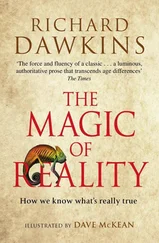David Deutch - The Fabric of Reality
Здесь есть возможность читать онлайн «David Deutch - The Fabric of Reality» весь текст электронной книги совершенно бесплатно (целиком полную версию без сокращений). В некоторых случаях можно слушать аудио, скачать через торрент в формате fb2 и присутствует краткое содержание. ISBN: , Жанр: Физика, Философия, на английском языке. Описание произведения, (предисловие) а так же отзывы посетителей доступны на портале библиотеки ЛибКат.
- Название:The Fabric of Reality
- Автор:
- Жанр:
- Год:неизвестен
- ISBN:0-7139-9061-9
- Рейтинг книги:4 / 5. Голосов: 2
-
Избранное:Добавить в избранное
- Отзывы:
-
Ваша оценка:
- 80
- 1
- 2
- 3
- 4
- 5
The Fabric of Reality: краткое содержание, описание и аннотация
Предлагаем к чтению аннотацию, описание, краткое содержание или предисловие (зависит от того, что написал сам автор книги «The Fabric of Reality»). Если вы не нашли необходимую информацию о книге — напишите в комментариях, мы постараемся отыскать её.
The Fabric of Reality — читать онлайн бесплатно полную книгу (весь текст) целиком
Ниже представлен текст книги, разбитый по страницам. Система сохранения места последней прочитанной страницы, позволяет с удобством читать онлайн бесплатно книгу «The Fabric of Reality», без необходимости каждый раз заново искать на чём Вы остановились. Поставьте закладку, и сможете в любой момент перейти на страницу, на которой закончили чтение.
Интервал:
Закладка:
To those who would prefer reality to have a more prosaic structure, it may seem somehow out of proportion — unfair, even — that such momentous consequences can flow from the fact that a tiny spot of light on a screen should be here rather than there. Yet they do, and this is by no means the first time in the history of science that such a thing has happened. In this respect the discovery of other universes is quite reminiscent of the discovery of other planets by early astronomers. Before we sent space probes to the Moon and planets, all our information about planets came from spots of light (or other radiation) being observed in one place rather than another. Consider how the original, defining fact about planets — the fact that they are not stars — was discovered. Watching the night sky for a few hours, one sees that the stars appear to revolve about a particular point in the sky. They revolve rigidly, holding fixed positions relative to one another. The traditional explanation was that the night sky was a huge ‘celestial sphere’ revolving around the fixed Earth, and that the stars were either holes in the sphere or glowing embedded crystals. However, among the thousands of points of light in the sky visible to the naked eye, there are a handful of the brightest which, over longer periods, do not move as if they were fixed on a celestial sphere. They wander about the sky in more complex motions. They are called ‘planets’, from the Greek word meaning ‘wanderer’. Their wandering was a sign that the celestial-sphere explanation was inadequate.
Successive explanations of the motions of planets have played an important role in the history of science. Copernicus’s heliocentric theory placed the planets and the Earth in circular orbits round the Sun. Kepler discovered that the orbits are ellipses rather than circles. Newton explained the ellipses through his inverse-square law of gravitational forces, and his theory was later used to predict that the mutual gravitational attraction of planets would cause small deviations from elliptical orbits. The observation of such deviations led to the discovery in 1846 of a new planet, Neptune, one of many discoveries that spectacularly corroborated Newton’s theory. Nevertheless, a few decades later Einstein’s general theory of relativity gave us a fundamentally different explanation of gravity, in terms of curved space and time, and thereby predicted slightly different motions again. For instance, it correctly predicted that every year the planet Mercury would drift by about one ten-thousandth of a degree away from where Newton’s theory said it should be. It also implied that starlight passing close to the Sun would be deflected twice as much by gravity as Newton’s theory would predict. The observation of this deflection by Arthur Eddington in 1919 is often deemed to mark the moment at which the Newtonian world-view ceased to be rationally tenable. (Ironically, modern reappraisals of the accuracy of Eddington’s experiment suggest that this may have been premature.) The experiment, which has since been repeated with great accuracy, involved measuring the positions of spots (the images of stars close to the limb of the Sun during an eclipse) on a photographic plate.
As astronomical predictions became more accurate, the differences between what successive theories predicted about the appearance of the night sky diminished. Ever more powerful telescopes and measuring instruments have had to be constructed to detect the differences. However, the explanations underlying these predictions have not been converging. On the contrary, as I have just outlined, there has been a succession of revolutionary changes. Thus observations of ever smaller physical effects have been forcing ever greater changes in our world-view. It may therefore seem that we are inferring ever grander conclusions from ever scantier evidence. What justifies these inferences? Can we be sure that just because a star appeared millimetrically displaced on Eddington’s photographic plate, space and time must be curved; or that because a photodetector at a certain position does not register a ‘hit’ in weak light, there must be parallel universes?
Indeed, what I have just said understates both the fragility and the indirectness of all experimental evidence. For we do not directly perceive the stars, spots on photographic plates, or any other external objects or events. We see things only when images of them appear on our retinas, and we do not perceive even those images until they have given rise to electrical impulses in our nerves, and those impulses have been received and interpreted by our brains. Thus the physical evidence that directly sways us, and causes us to adopt one theory or world-view rather than another, is less than millimetric: it is measured in thousandths of a millimetre (the separation of nerve fibres in the optic nerve), and in hundredths of a volt (the change in electric potential in our nerves that makes the difference between our perceiving one thing and perceiving another).
However, we do not accord equal significance to all our sensory impressions. In scientific experiments we go to great lengths to bring to our perceptions those aspects of external reality that we think might help us to distinguish between rival theories we are considering. Before we even make an observation, we decide carefully where and when we should look, and what we should look for. Often we use complex, specially constructed instruments, such as telescopes and photomultipliers. Yet however sophisticated the instruments we use, and however substantial the external causes to which we attribute their readings, we perceive those readings exclusively through our own sense organs. There is no getting away from the fact that we human beings are small creatures with only a few inaccurate, incomplete channels through which we receive all information from outside ourselves. We interpret this information as evidence of a large and complex external universe (or multiverse). But when we are weighing up this evidence, we are literally contemplating nothing more than patterns of weak electric current trickling through our own brains.
What justifies the inferences we draw from these patterns? It is certainly not a matter of logical deduction. There is no way of proving from these or from any other observations that the external universe, or multiverse, exists at all, let alone that the electric currents received by our brains stand in any particular relationship to it. Anything or everything that we perceive might be an illusion or a dream. Illusions and dreams are, after all, common. Solipsism, the theory that only one mind exists and that what appears to be external reality is only a dream taking place in that mind, cannot be logically disproved. Reality might consist of one person, presumably you, dreaming a lifetime’s experiences. Or it might consist of just you and me. Or just the planet Earth and its inhabitants. And if we dreamed evidence — any evidence — of the existence of other people, or other planets, or other universes, that would prove nothing about how many of those things there really are.
Since solipsism, and an infinity of related theories, are logically consistent with your perceiving any possible observational evidence, it follows that you can logically deduce nothing about reality from observational evidence. How, then, could I say that the observed behaviour of shadows ‘rules out’ the theory that there is only one universe, or that eclipse observations make the Newtonian world-view ‘rationally untenable’? How can that be so? If ‘ruling out’ does not mean ‘disproving’, what does it mean? Why should we feel compelled to change our world-view, or indeed any opinion at all, on account of something being ‘ruled out’ in that sense? This critique seems to cast doubt on the whole of science — on any reasoning about external reality that appeals to observational evidence. If scientific reasoning does not amount to sequences of logical deductions from the evidence, what does it amount to? Why should we accept its conclusions?
Читать дальшеИнтервал:
Закладка:
Похожие книги на «The Fabric of Reality»
Представляем Вашему вниманию похожие книги на «The Fabric of Reality» списком для выбора. Мы отобрали схожую по названию и смыслу литературу в надежде предоставить читателям больше вариантов отыскать новые, интересные, ещё непрочитанные произведения.
Обсуждение, отзывы о книге «The Fabric of Reality» и просто собственные мнения читателей. Оставьте ваши комментарии, напишите, что Вы думаете о произведении, его смысле или главных героях. Укажите что конкретно понравилось, а что нет, и почему Вы так считаете.












